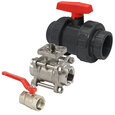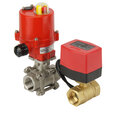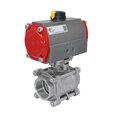Ball Valve Issues And Troubleshooting
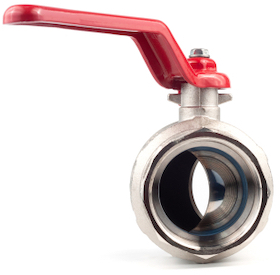
Figure 1: Ball valve
Troubleshooting ball valves is essential for maintaining the efficiency and reliability of fluid control systems. These valves can encounter several issues, such as leakage, jamming, and wear, which can lead to operational disruptions. Identifying the causes of these problems is crucial for effective maintenance and repair. This article provides a comprehensive guide to diagnosing and resolving common ball valve issues to ensure optimal performance.
Table of contents
- Ball valve issues
- Partially closing ball valve.
- Ball valve stuck
- Other ball valve failure modes
- Conclusion
- FAQs
View our online selection of ball valves!
Ball valve issues
A ball valve is a shut-off valve that allows or prevents fluid flow (liquid or gas) through an installation. Ball valves are the most common and reliable valve type used to regulate water flow. The valve consists of a rotating sphere containing a hole. The sphere is attached to a lever handle that can be turned to operate the valve. Read our article on ball valves for more details on the working mechanism and parts of a ball valve.
While PVC ball valves are the most popular type, ball valves are also available in stainless steel, brass, and other materials. Every ball valve shows symptoms of wearing down over time when used continuously. Also, the valve may leak if it is used after a certain period of inactivity. This requires halting the current operation and removing the ball valve from the system to get the pieces working again. To avoid these problems and system shutdowns, the best solution is to figure out the average life expectancy of the ball valve. It is possible to know roughly when to swap them out without getting caught off-guard. The average life expectancy of a ball valve is approximately eight to ten years.
Ball valves go through extensive wear and tear due to the constant rotation it encounters to close and open the valve. Sometimes ball valves stop working properly due to corrosion of the various valve parts. It is important to understand different potential ball valve failure methods to properly troubleshoot applications.
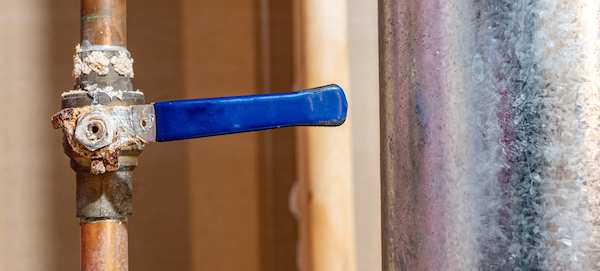
Figure 2: Heavily rusted ball valve connected to a water line
Identify the valve type and operation
Ball valves, gate valves, and butterfly valves are commonly used in households to start, stop, or channel water supply to multiple locations. These valves can be controlled electrically through an actuator or manually through knobs or levers. It is necessary to identify the type of valve being checked on. A gate valve has a knob that looks like a circular spigot, whereas a ball valve has a handle like a lever. Manually operated butterfly valves can have a crank, handwheel, or lever to operate the valve.
To turn the water supply off in the case of a gate valve or butterfly valve, rotate the handle by a few turns clockwise until it can't be turned any further. To stop the fluid flow through a ball valve, turn the lever 90 degrees clockwise.
Ball valves can be classified into three different types based on their structure:
- One-piece ball valve: These valves have a single solid cast body that reduces the risk of leakage.
- Two-piece ball valve: A two-piece ball valve consists of two individual pieces. The first piece has an end connection and the body, and the second piece fits into this piece. Once installed, these valves have to be removed from service for repair works.
- Three-piece ball valve: A three-piece ball valve consists of three pieces: a body and two end caps. Both end caps are welded or threaded into the pipe. The main body section can be easily uninstalled for cleaning or repair without removing the end caps, thereby preventing a total line shutdown during maintenance works.
Read our article on 1, 2, and 3-piece ball valves for more details. The main issues and troubleshooting mechanisms of ball valves are discussed in the next sections.
Ball valve won’t shut off
Ball valves that are not exercised continuously may leak a small amount of water when turned off. When the ball valve is shut off, water may find a way out, especially if there is an issue with the valve sealing. In some cases replacing the valve may not be an easy solution, especially if the old valve is fitted in a tight spot. Tighten up the valve fittings with a pair of pliers and check if it stops the leak. If not, replace the seal inside the valve or just get a new valve altogether.
Partially closing ball valve.
Sometimes a ball valve cannot be turned all the way to shut it off completely. If the valve closes only partially, in most cases, it may be needed to replace the valve seat or replace it with a new valve that works more steadily. All valve seats are not designed to be removed. Inspect inside the valve body, and if it has a hexagonal or square bore or a screwdriver slot, the seat can be replaced.
To replace the ball valve with a new one, perform the following steps:
- Buy a new valve. Read our article on the ball valve selection guide for more details.
- Shut off the water supply to the pipes that are being worked on during valve replacement.
- Cut off the pipe and remove the old valve using a hacksaw blade.
- Splice a new pipe section to the part of the pipe that was cut to remove the valve.
- Secure the new ball valve into the pipe. Read our article on ball valve installation for more details.
- Turn on the water supply and check for any leaks or loose connections.
Treating a partially open ball valve is crucial since a shut-off valve that doesn’t close completely can not do its job in an extreme situation, leading to leakage of poisonous gas or leaving an apartment filled with water.
Ball valve stuck
Ball valves are commonly used valves for main water and various branch shutoffs. This valve functions as an ON/OFF valve which means that the valve should be either completely open allowing full flow, or completely closed, stopping the entire water flow. Occasionally, it may be necessary to loosen a PVC ball valve because it is stuck or tight, thereby creating an obstruction to fluid flow. If a ball valve won’t open, perform the following steps to rectify the issue:
- Manual operation
- Turn off the main water supply.
- Then, loosen the valve by opening and closing it multiple times by turning its handle.
- Gently hammer the valve body multiple times on the valve body to break and free up the particles that are trapped between the ball and the valve body. Make sure not to pound a PVC valve too hard as it can easily crack.
- Gently wiggle and rock the valve handle to help service the ball element and force it to move. Also, try to remove the valve handle and turn the valve a few times using a plier to help it move freely, and place the handle back on the valve using its screw. If these steps don’t work, move on to step 2.
- Using a lubricant like WD-40
- Note: WD-40 is a lubricant that can reach and lubricate even the most difficult joints of a shutoff valve by removing the rust and corrosive metals. It is fine to use WD-40 on a water shut-off valve. The solution is non-lethal; hence, it won’t damage the threads and pipe. WD-40 contains petroleum-based oils; hence always read the precautions on the valve body before using the lubricant on plastic-based valves as it can melt the plastic upon application.
- Spray a lubricant like WD-40 on the valve where the handle enters the valve body. Let it sit for around 20 minutes. However, it is not a good idea to use WD-40 on plastic as plastics are generally not affected by this lubricant. Hence, WD-40 doesn’t work on PVC valves.
- Try loosening the valve again by hand. If it doesn’t move, tap it lightly with a hammer.
- Then, position a pipe wrench around the handle and try to turn the valve. If it moves, open and close the valve multiple times to loosen it. Then move to step 3.
- Turn the water supply on and keep turning the ball valve until it gets loose.
Other ball valve failure modes
Sediment and dirt buildup
The buildup of sediment and dirt within the ball valve can make it difficult to open and close. Take the valve apart and clean out any visible dirt if this happens.
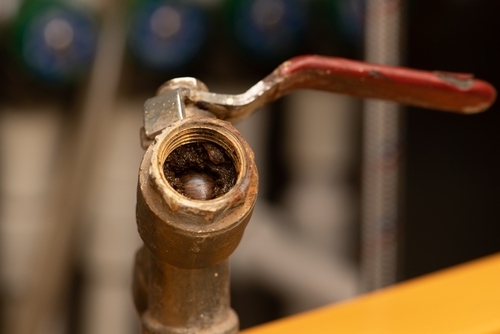
Figure 3: An used ball valve full of mud and dirt
Worn-out o-ring
The fluid continuously pushes against the ball valve, due to which the valve’s o-ring gets worn down over time. This is a natural symptom of valve usage; therefore, get a new o-ring when it shows symptoms of wearing down. Turning down the liquid intensity flowing through the valve can help extend the life span of these o-rings. Read our article on preventing o-ring damage for more details.
Damaged valve stem
The inner packing of the valve stem can get worn out over time. Replace the valve stem in case of any scratching or damage before the whole unit falls apart.
Actuator issues
In electric ball valves, an actuator controls the flow of gas/liquid through the valve. For electric actuators, make sure that the voltage applied to the actuator is not too high to prevent the risk of valve overheating. Read our article on electric ball valves for more details on the actuator selection and operating principles.
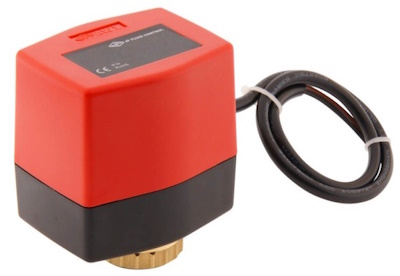
Figure 5: Electric actuator for ball valves
Conclusion
It is important to check the shut-off valves occasionally for possible faults. Finding out one isn’t working in a non-emergency situation is much less stressful and allows ample time to get it fixed. Finding out it doesn’t work when the valve is needed the most will pose a bigger problem out of something that could have been little more than just an inconvenience.
FAQs
Do ball valves wear out?
A ball valve wears out over time. Its average life expectancy is 8-10 years, depending on chosen material and media
Why are quarter-turn valves better?
Quarter-turn valves have simple construction reducing the points of wear and tear, resulting in more durable and long-lasting ball valves.
Can you spray wd-40 on a water shut-off valve?
If a ball valve gets stuck, spray wd-40 on the valve and let it rest for some time to enable lubrication.




